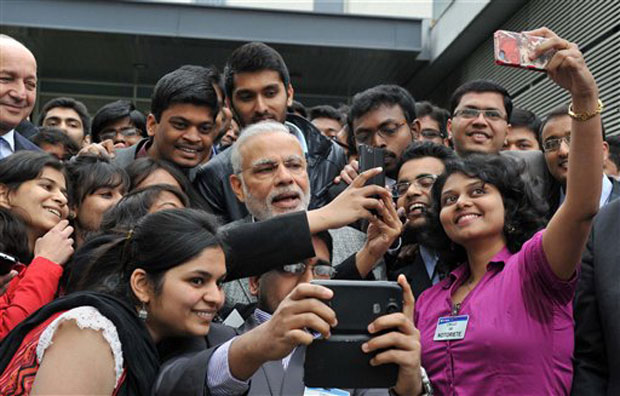I always thought that young people, especially in the age group of 18-19 are too young to vote. India is a very complex country, culturally, geographically and even politically. It is true that we have the simplest system of First Past the Post, but the electioneering, caste politics, regional and aspirational diversities, make Indian election by far the most complex in the world.
This general election 8.4 crore new voters joined the celebration of democracy, among them over 1.5 crore voters are in the age group of 18-19. They are the emerging face and fate of India. All political parties must pay heed to their demands, as the number they hold is enough to offset any political equation.
But the question is, are the young voters able to understand these intricacies? I was pleasantly surprised when I interacted with a young first-time voter, who has just turned 18. You could easily spot a tattoo in Korean under his rolled up sleeves. He was trying to sport a beard which isn’t fully grown. But to my surprise, what I learnt from the interaction is that the new generation of voters is not blind, they understand politics way better than I had imagined – thanks to social media and meme-magic! They are not gullible. They do not believe everything they come across in news; they fact check and form their own opinion. He voted for Modi and made a convincing case why every young voter should vote for Him.
When I was of his age, I was made to feel ashamed that I am a Hindu. The environment was like that. The books we read, the lectures we got everything was an assault on the culture and identity. I, in fact, thought to badmouth everything that is Hindu is the true meaning of secularism. I believed in false propaganda peddled by the left-leaning national newspapers and media channels. Then after many years, I understood this was a concerted effort of the anti-India forces to brainwash generations to view India through an anglicised western frame of reference to further their ideological agenda.
Today’s young generation is different. They are not afraid of voicing their thoughts and concerns freely. They understand the bigger picture and realize the importance of Modi in this cultural war. This was the most important issue for the young man to vote for Modi.
Today’s young voters do not want freebies. In fact, they despise it for it makes them feel patronised. They want historical, cultural and individual dignity. They take pride being an Indian and identify with PM Modi’s valour to give Pakistan a reply in the language it understands. They feel proud when India stands its ground in Doklam. They admire the growing global influence of India under Modi government.
The next thing that young voters seek is economic security. India is young, with 65 per cent of the people under the age of 35. In a speech, in 2014 PM Modi had said that India is blessed with democracy, demographic dividend, and demand. These three things present a huge opportunity for young Indians.
The broad bottom of the population pyramid of India suggests how important it is to provide quality education to the growing young population. With a promise of “Education to all” Modi govt has established seven new Indian Institutes of Management (IIMs), six new Indian Institutes of Technology (IITs) and two new Indian Institutes of Science Education and Research (IISERs). A new proposed education policy is striving to revive the rankings of our institutions for world-class education. Do you know under SWAYAM programme one can learn from the professors of IITs, IIMs and Central Universities, free of cost anywhere in India? All she needs is a smartphone and an internet connection.
Young India is filled with hopes and aspirations. Maybe they don’t like to be engineers or doctors. Maybe they want to be a Youtuber, or want to do a startup. The startup climate before 2014 was bad, to say the least, the risks were higher, there was no safety net and no intellectual rights protection.
Things have changed after May, 2014. It’s now easier than ever for them to pursue their passion and dreams. Under the Start-up India programme, they can get land, loan, and link to essential services for their startup. If things do not work out, they do not have to wait years to close down the startup and pay taxes. The new Insolvency and Bankruptcy Code (I&BC) allows them to wind up their business within 90 days. This frees them to start another startup. If one already owns a small business or wants to establish one, he can avail the benefits of Pradhan Mantri MUDRA Yojna.
It is often said that India’s problem is not unemployment, but the unemployable youth. Skill India programme is striving to solve this problem on a mission mode. Make in India is another flagship programme which aims to hit two birds with one stone. It will boost the manufacturing sector and provide huge employment opportunity for the youth. A win-win situation.
I recently watched the movie “Gully Boy”, and I remember the main protagonist wrote ‘Roti, Kapda, Makaan aur Internet’ on a wall. This small scene shows that young India seeks much more than just basic needs. They want high-speed bullet train and high-speed internet; they want a smartphone and a smart city; they want clean streets and a clean government. They want more, they want Modi.
